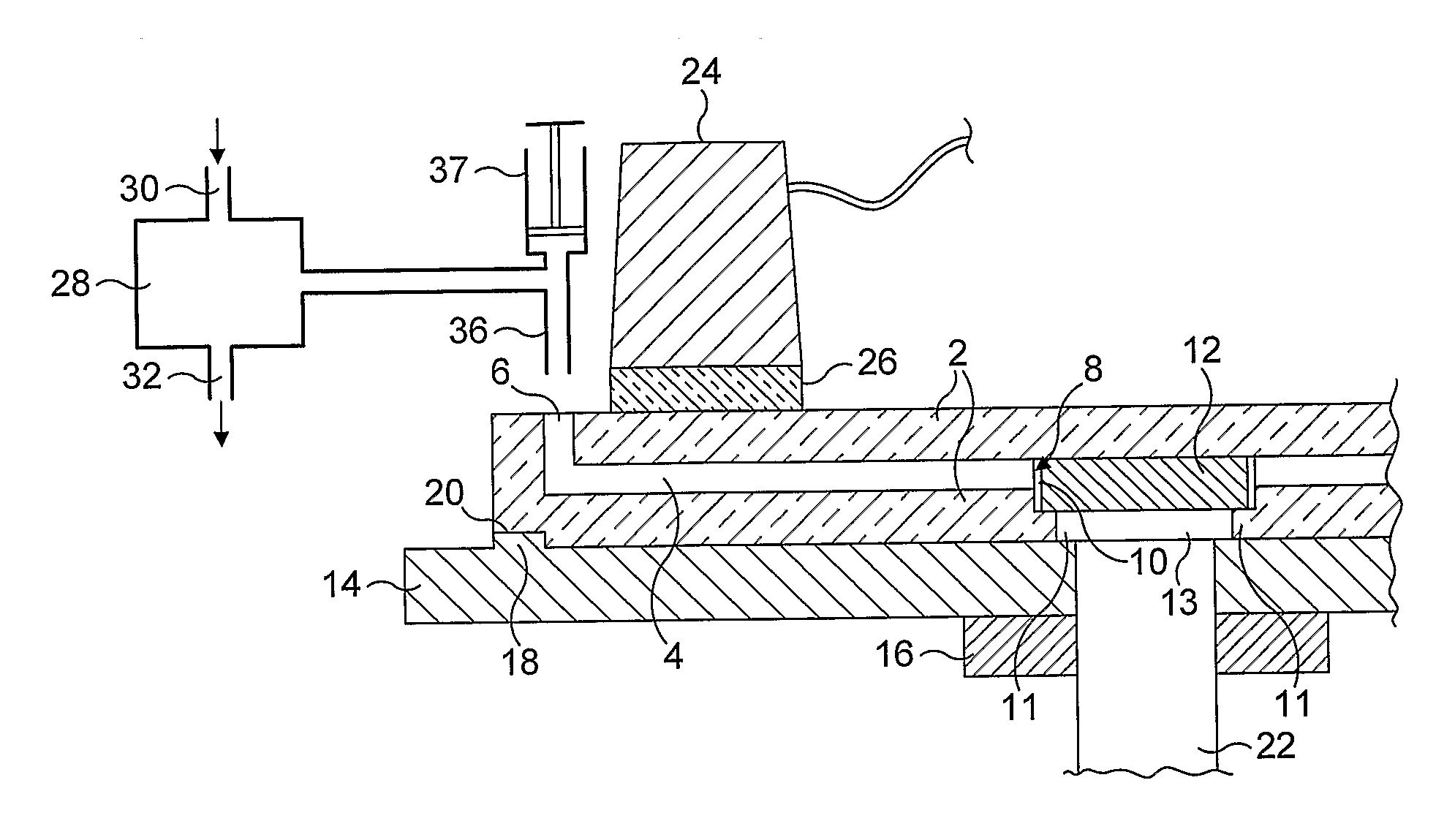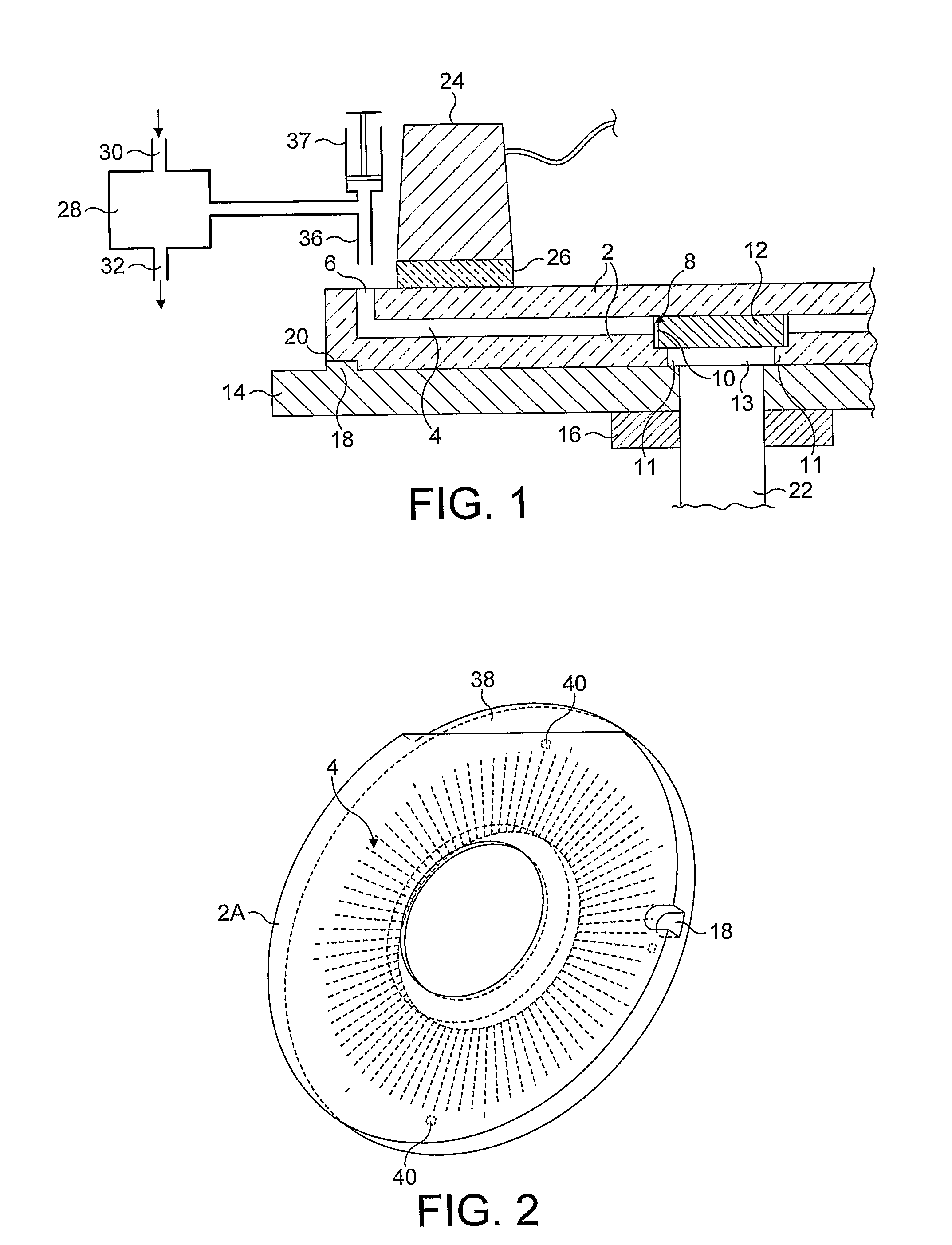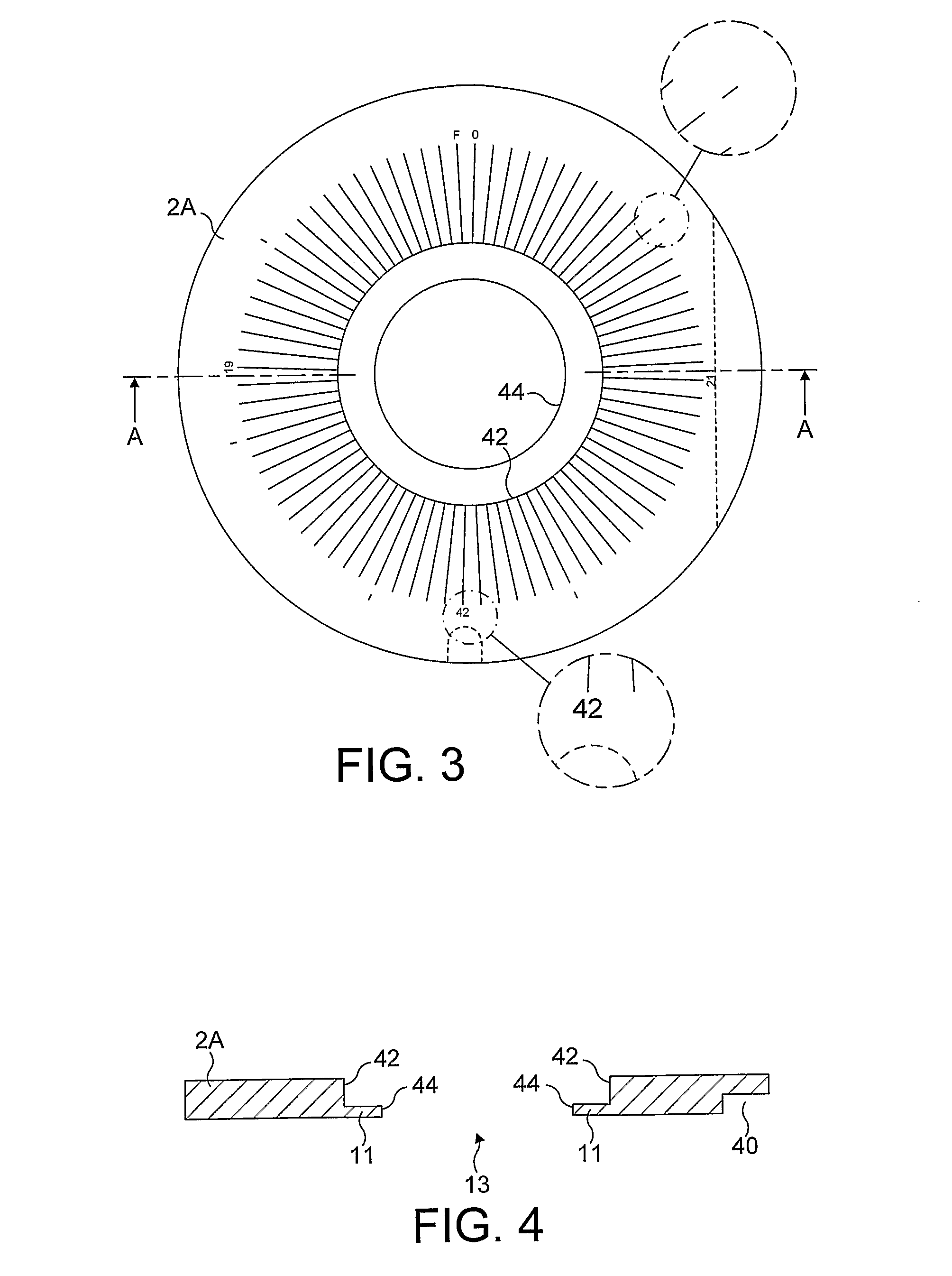Flow-through cell and method of use
a flow-through cell and flow-through technology, applied in the field of flow-through cells, can solve the problems of difficult inspection, increased risk of error, laborious laboratory microscopy techniques, etc., and achieve the effect of reducing cross-contamination between channels and optical discontinuities
- Summary
- Abstract
- Description
- Claims
- Application Information
AI Technical Summary
Benefits of technology
Problems solved by technology
Method used
Image
Examples
Embodiment Construction
[0067]FIG. 1 is a cross-section through a system comprising detection apparatus and a flow-through cell according to the present invention. A flow-through cell 1 comprises a transparent glass substrate 2 which defines a plurality of channels 4, one of which is shown in full. The flow-through cell is made from a high quality optical glass and is substantially planar, allowing it to be used as a microscope slide. Each channel has an inlet 6 and outlet 8. Each channel is around 100 microns wide and 40 microns high. 40 microns is a capillary dimension which causes the substrate to draw a liquid sample introduced through the inlet into the channel.
[0068]Each outlet is covered by a size exclusion filter membrane 10 which functions as means to allow the flow of a liquid sample through the channel from the inlet to the outlet while retaining particles (in this case micro-organisms) from the liquid sample whose dimensions exceed threshold dimensions within the channel. A wick 12, such as a b...
PUM
 Login to View More
Login to View More Abstract
Description
Claims
Application Information
 Login to View More
Login to View More - R&D
- Intellectual Property
- Life Sciences
- Materials
- Tech Scout
- Unparalleled Data Quality
- Higher Quality Content
- 60% Fewer Hallucinations
Browse by: Latest US Patents, China's latest patents, Technical Efficacy Thesaurus, Application Domain, Technology Topic, Popular Technical Reports.
© 2025 PatSnap. All rights reserved.Legal|Privacy policy|Modern Slavery Act Transparency Statement|Sitemap|About US| Contact US: help@patsnap.com



